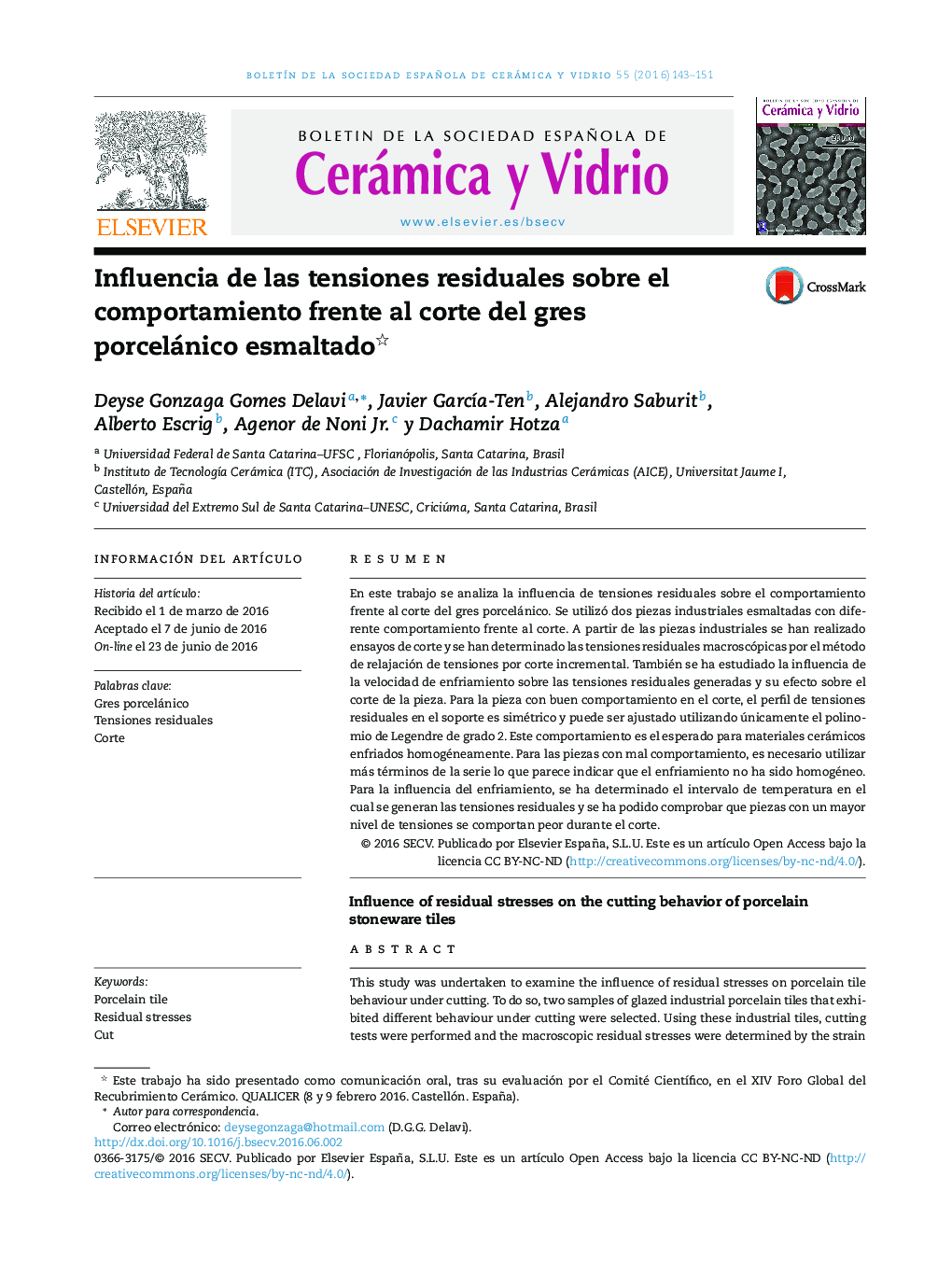| کد مقاله | کد نشریه | سال انتشار | مقاله انگلیسی | نسخه تمام متن |
|---|---|---|---|---|
| 1454163 | 1398144 | 2016 | 9 صفحه PDF | دانلود رایگان |

ResumenEn este trabajo se analiza la influencia de tensiones residuales sobre el comportamiento frente al corte del gres porcelánico. Se utilizó dos piezas industriales esmaltadas con diferente comportamiento frente al corte. A partir de las piezas industriales se han realizado ensayos de corte y se han determinado las tensiones residuales macroscópicas por el método de relajación de tensiones por corte incremental. También se ha estudiado la influencia de la velocidad de enfriamiento sobre las tensiones residuales generadas y su efecto sobre el corte de la pieza. Para la pieza con buen comportamiento en el corte, el perfil de tensiones residuales en el soporte es simétrico y puede ser ajustado utilizando únicamente el polinomio de Legendre de grado 2. Este comportamiento es el esperado para materiales cerámicos enfriados homogéneamente. Para las piezas con mal comportamiento, es necesario utilizar más términos de la serie lo que parece indicar que el enfriamiento no ha sido homogéneo. Para la influencia del enfriamiento, se ha determinado el intervalo de temperatura en el cual se generan las tensiones residuales y se ha podido comprobar que piezas con un mayor nivel de tensiones se comportan peor durante el corte.
This study was undertaken to examine the influence of residual stresses on porcelain tile behaviour under cutting. To do so, two samples of glazed industrial porcelain tiles that exhibited different behaviour under cutting were selected. Using these industrial tiles, cutting tests were performed and the macroscopic residual stresses were determined by the strain relaxation incremental slotting method. The influence of the cooling rate on the arising residual stresses and their effect on tile cutting were also studied.For the porcelain tile with appropriate cutting behaviour, the residual stress profile in the body was symmetrical and could be fitted by just using the second- degree Legendre polynomial. This was the expected behaviour for homogenously cooled ceramic materials (same cooling rate at the proper surface as at the rib). For pieces with inappropriate cutting behaviour, it was necessary to use more terms of the series, which suggested that cooling had not been homogeneous. With regard to the influence of cooling, the temperature range in which residual stresses were generated was determined and it was verified that pieces with a greater level of stresses exhibited worse cutting behaviour.
Journal: Boletín de la Sociedad Española de Cerámica y Vidrio - Volume 55, Issue 4, July–August 2016, Pages 143–151